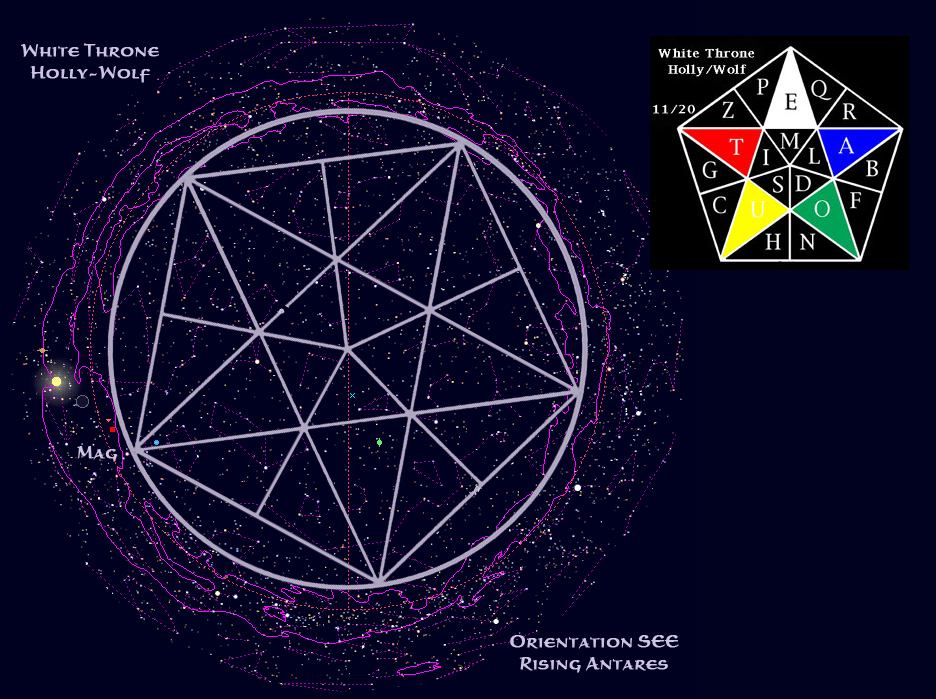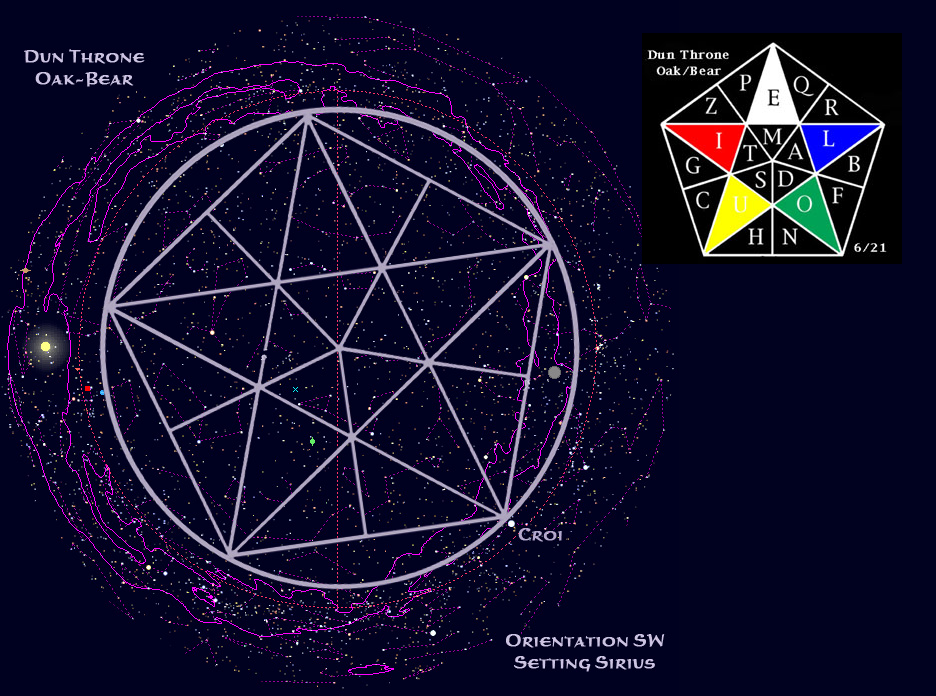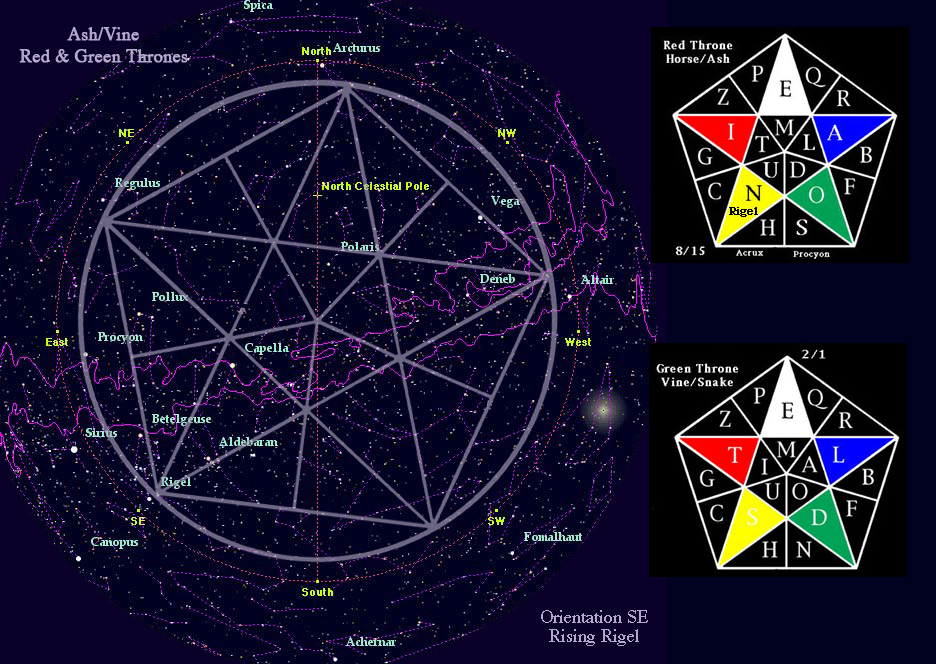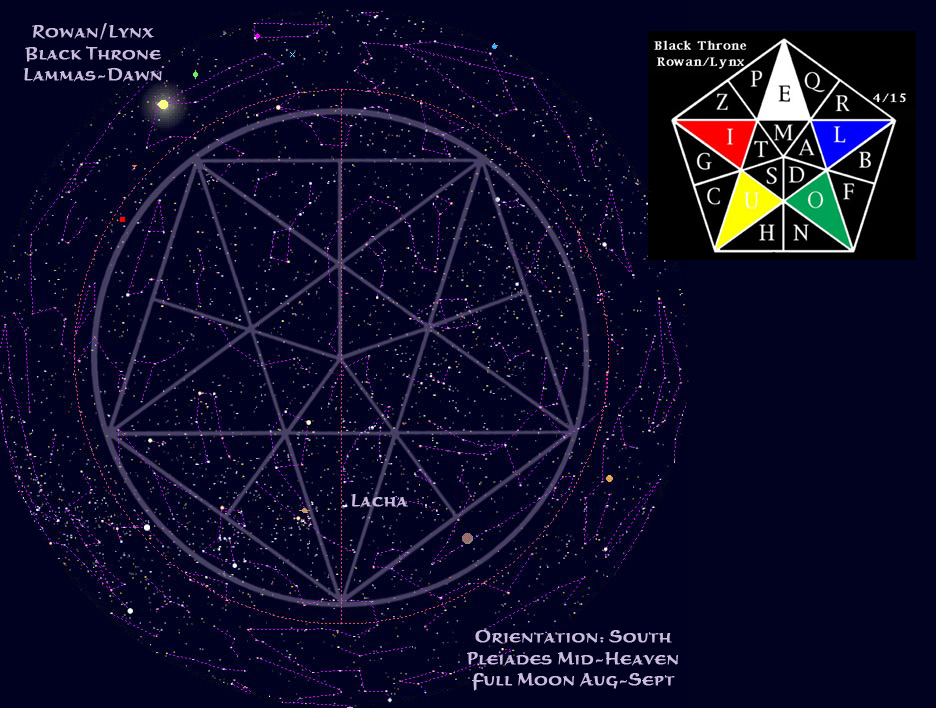Calendars of the Nine Nations

Calendars in Anieth are intimately tied to astronomy. The cycles are determined by eclipses
and the year begin and holidays are determined by the rising and setting of certain stars. These
people counted twenty stars of significance. They used a five-fold system for star mapping and
for their observatories. In this picture, you can see the rising and setting of the stars around
the horizon superimposed upon the round floor of an observatory. (See the astronomy pages for
more information about observatories.) I have also marked out the "home" of each of the stars
on the five-fold map.

Also is it useful to remember that we are dealing here with a pre-literate society. Everything
had to be memorized. The way that thousands and thousands of lines of lore was memorized was in
verse using a correspondence system that allowed for poetic liberties to make the verses easier to
remember. Here are just two of the correspondences, animals and trees.
And here, the stars alone with the letters and the addition of another layer of correspondence
with the seasons. We still have not determined if the number of seasons are four, five or six in
Anieth since they did not refer to seasons as we do. I am merely using this dating to facilitate
my explanation of the differences between the Nations as you shall soon see.

I'm now going to show you a series of images showing where each of the Nations begin their
year and to what orientation is their observatory.
You will note here that although the sky looks the same for each of these Nations, the Fire
Nation (Ochre) is observing the setting of Sirius in mid-summer and the Sky Nation (Aspen) is
observing the setting of Deneb in February.
And here is the Moon Nation, with the sacred king ritual taking place in late autumn with the
rising of the Wolf constellation and Antares/Mag.
Again, the Magenta and Saffron Nations share a sky, but their orientation is opposite. The
Deer Nation celebrates the king ritual in the spring with the rising of Aldebaran, where the
Gold Nation celebrates with the setting of Altair, each of these their totem animals.
Although one might expect the Autumn Nation to orient their observator toward the Heart of the
Bear (Croi/Sirius) they have put the sign of Croi into a more central position in their observatory.
With the adoption of the Thorn King (also the patron of the Gold Nation), the Summer Nation (Green)
changed their totem plant to the bramble. Yet nothing else changed with the high position of their
totem star, (Thuban in Draco) and their king celebration at the advent of spring. The Red Nation of the
Rising Sun, appropriately begins their year at the height of summer with the rising of the Horse
constellation (Orion).
The Star Nation also begins their year with Beltaine, when the Ducks are overhead,
yet they also have another important celebration in mid-summer called the Wake of the King at dawn,
again when the Ducks are overhead. This for them signifies the migration of the birds across
the river of stars.
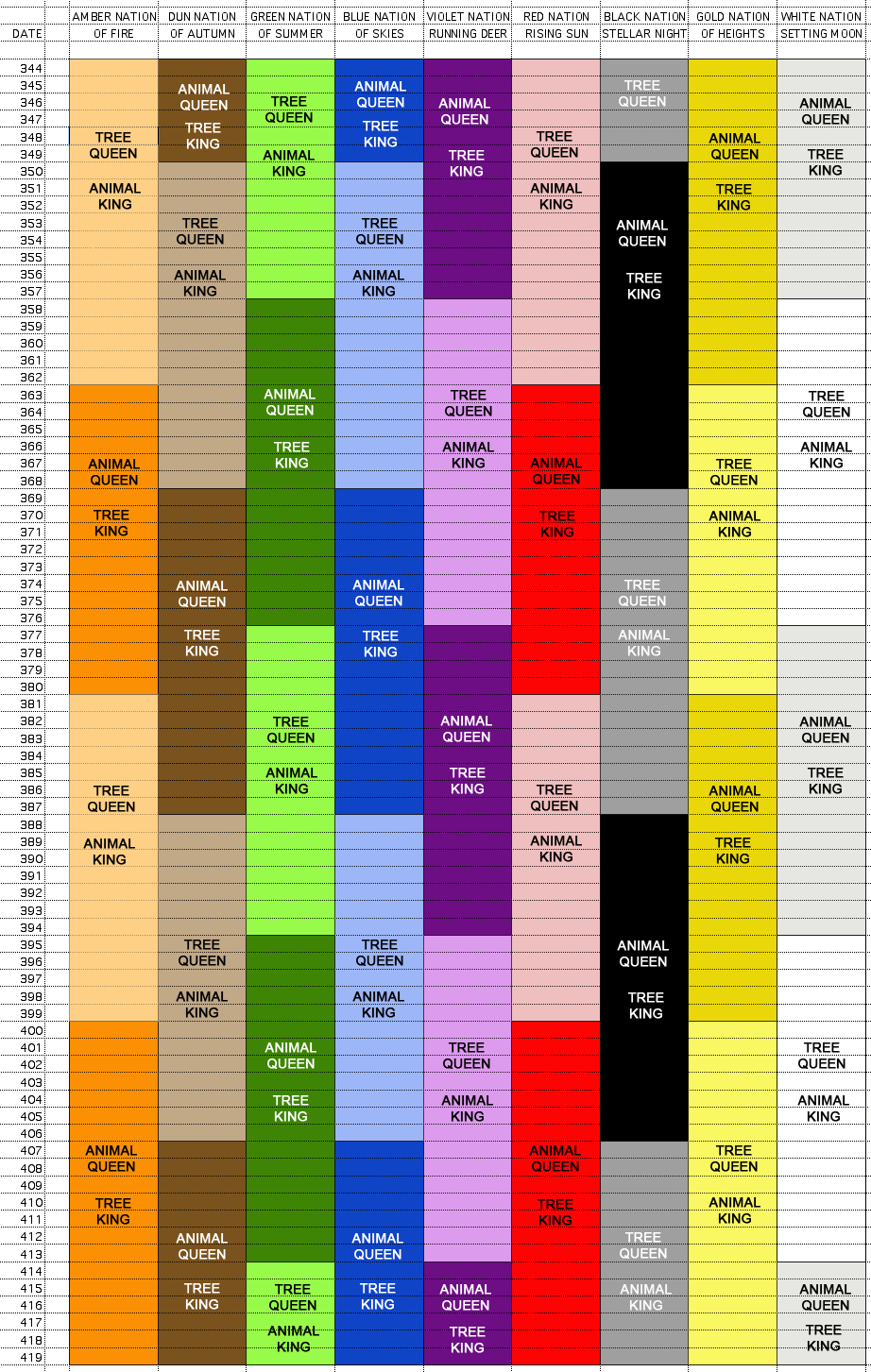
In the Cycles article, I showed you the patterns of the years for the Nations, which is independent
of the time of year of the start of the year. You see how these are staggered so that no two Nations
can ally in any way. Please see the articles on politics, yet, in brief, the Clans did not want
any of the Nations to be "friendly" to one another. The Animal Kings were elected from foreigners
or the lower classes; the Tree Kings were from the noble caste, but from outside of the local ruling
family. Jealousies abounded between queens and their kings if each vied for more power or wealth.
And in nineteen years it was all over. Queens had to retire, kings were killed in the sacred ceremonies,
colleges were changed out; in short, a Nation was in chaos during the change of generations.
Here is the calendar showing the passage of time of the books with the Nations to the left of
the years.

© 2012, A.R. Stone





